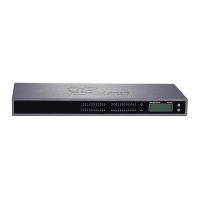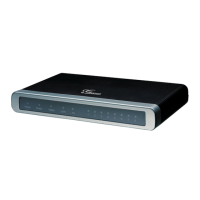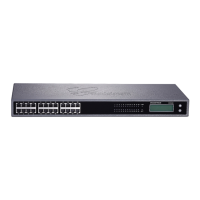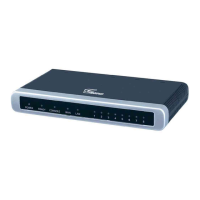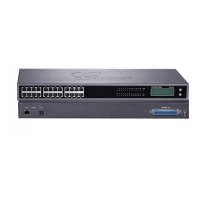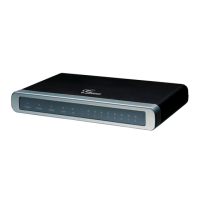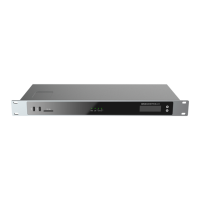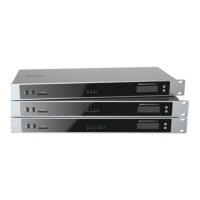Basic Settings
Clock
All E1/T1/J1 spans generate a clock signal on their transmit side. The parameter determines whether the clock signal from
far end of the E1/T1/J1 is used as the master source of clock timing. If the far end is used as the master, the gateway syste
clock will synchronize to it.
Master: The port will never be used as a source of timing. This is appropriate when you know the far end should always
slave to you.
Slave: The equipment at the far end of the E1/T1/J1 link is the preferred source of the master clock.
Signaling
Chooses the signaling protocol that will be used on the digital port.
PRI: when one end is set to NET, the other end should be set to CPE.
Data channel
Chooses the Data Channel for control.
The user can group multiple E1 lines with a single data channel.
LBO
The line build-out (LBO) is the distance between the operators and the gateway. Please use the default value of 0dB unles
distance is long.
Coding
T1: “AMI” or “B8ZS”
E1: “AMI” or “HDB3”
RX Gain Configure the RX gain for the receiving channel of the digital port. The valid range is from -24dB to +12dB.
TX Gain Configure the TX Gain for the transmitting channel of the digital port. The valid range is -24dB to +12dB.
Codec Select alaw or ulaw. If set to default, ulaw will be used for T1/J1.
Framing Select “esf” or “d4”. The default setting is esf.
Advanced Settings
Switch Type
Select switch type.
EuroISDN: EuroISDN (common in Europe)
NI2: National ISDN type 2 (common in the US)
DMS100: Nortel DMS100
4ESS: AT&T 4ESS
5ESS: Lucent 5ESS
NI1: old national ISDN type 1
Q.SIG
PRI Dial Plan
This setting is used to specify the type of the callee number. The service provider will usually verify this. The default sett
“unknown”. In some very unusual circumstances, you may need set it to “Dynamic” or “Redundant”.
Note: When one type is selected, you might not be able to dial another class of numbers. For example, if “National” is
configured, you won’t be able to dial local or international numbers.
PRI Local Dial Plan This setting is used to specify the type of caller number. The service provider will usually verify this.
International Prefix
National Prefix
Local Prefix
Private Prefix
Unknown Prefix
Configure the prefix in PRI Local Dial Plan and PRI Dial Plan for each type.
PRI T310 Configure PRI T310 Timer (in seconds). The default value is 10 seconds.
PRI Indication Select the PRI Indication.
outofband: Use RELEASE, DISCONNECT, or other messages with CAUSE to indicate call progress (e.g., cause: unassig
number or user busy).

